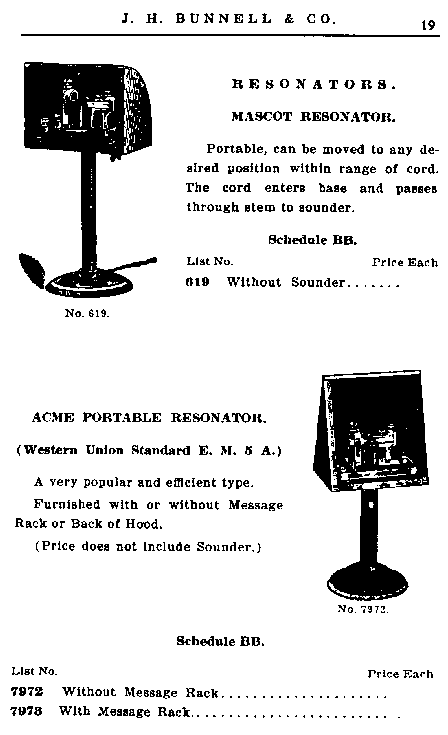Resonators -- Mascot & Acme Portable Resonator
 |
19A A resonator forms a cavity or reflecting surface which increases or directs the clicking of a sounder and alters its tone. As used on railroads, the local circuit sounder would be in the resonator, while the main line calling sounders were mounted on an open shelf. Both railroad and commercial operators positioned the resonator so it could be easily heard. To make the tone of his sounder even distinctive, an operator might wedge a tobacco tin between the sounder stop standard and the back the resonator. There were several styles of resonators, the simplest of which was an open-sided box hung from a stand. In another style called the "butterfly," the top, bottom and two sides are flared away from the back. The Bunnell "Mascot" style with a one-piece curved top and back was a popular style used by several manufacturers. 19B The "Acme" style of sounder was the standard of Western Union and many railroads; some Western Union standard types were 5A (as shown), 7A (a triple dwing arm stand) and 33A (with double swing arm stand). If the stand of the model pictured looks familiar, it might be because it's almost identical to the stand of a candlestick telephone. These resonators are described as "portable" once they can be carried to any desk (assuming a cord plug), or moved about on the desk. The 33A model, in contrast, although adjustable by virtue of its swing arms, was not portable; the base was bolted to the desk. |